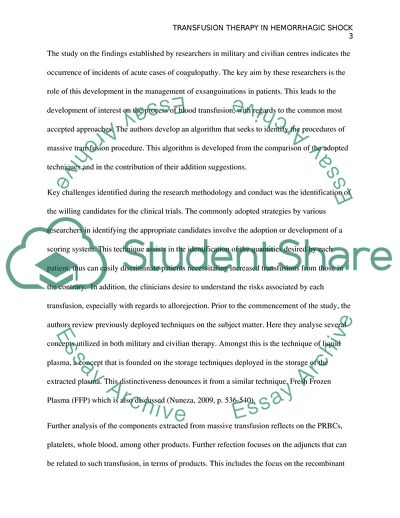Cite this document
(Transfusion therapy in hemorrhagic shock Essay Example | Topics and Well Written Essays - 1000 words, n.d.)
Transfusion therapy in hemorrhagic shock Essay Example | Topics and Well Written Essays - 1000 words. https://studentshare.org/medical-science/1790633-transfusion-therapy-and-hemorrhagic-shock
Transfusion therapy in hemorrhagic shock Essay Example | Topics and Well Written Essays - 1000 words. https://studentshare.org/medical-science/1790633-transfusion-therapy-and-hemorrhagic-shock
(Transfusion Therapy in Hemorrhagic Shock Essay Example | Topics and Well Written Essays - 1000 Words)
Transfusion Therapy in Hemorrhagic Shock Essay Example | Topics and Well Written Essays - 1000 Words. https://studentshare.org/medical-science/1790633-transfusion-therapy-and-hemorrhagic-shock.
Transfusion Therapy in Hemorrhagic Shock Essay Example | Topics and Well Written Essays - 1000 Words. https://studentshare.org/medical-science/1790633-transfusion-therapy-and-hemorrhagic-shock.
“Transfusion Therapy in Hemorrhagic Shock Essay Example | Topics and Well Written Essays - 1000 Words”. https://studentshare.org/medical-science/1790633-transfusion-therapy-and-hemorrhagic-shock.


